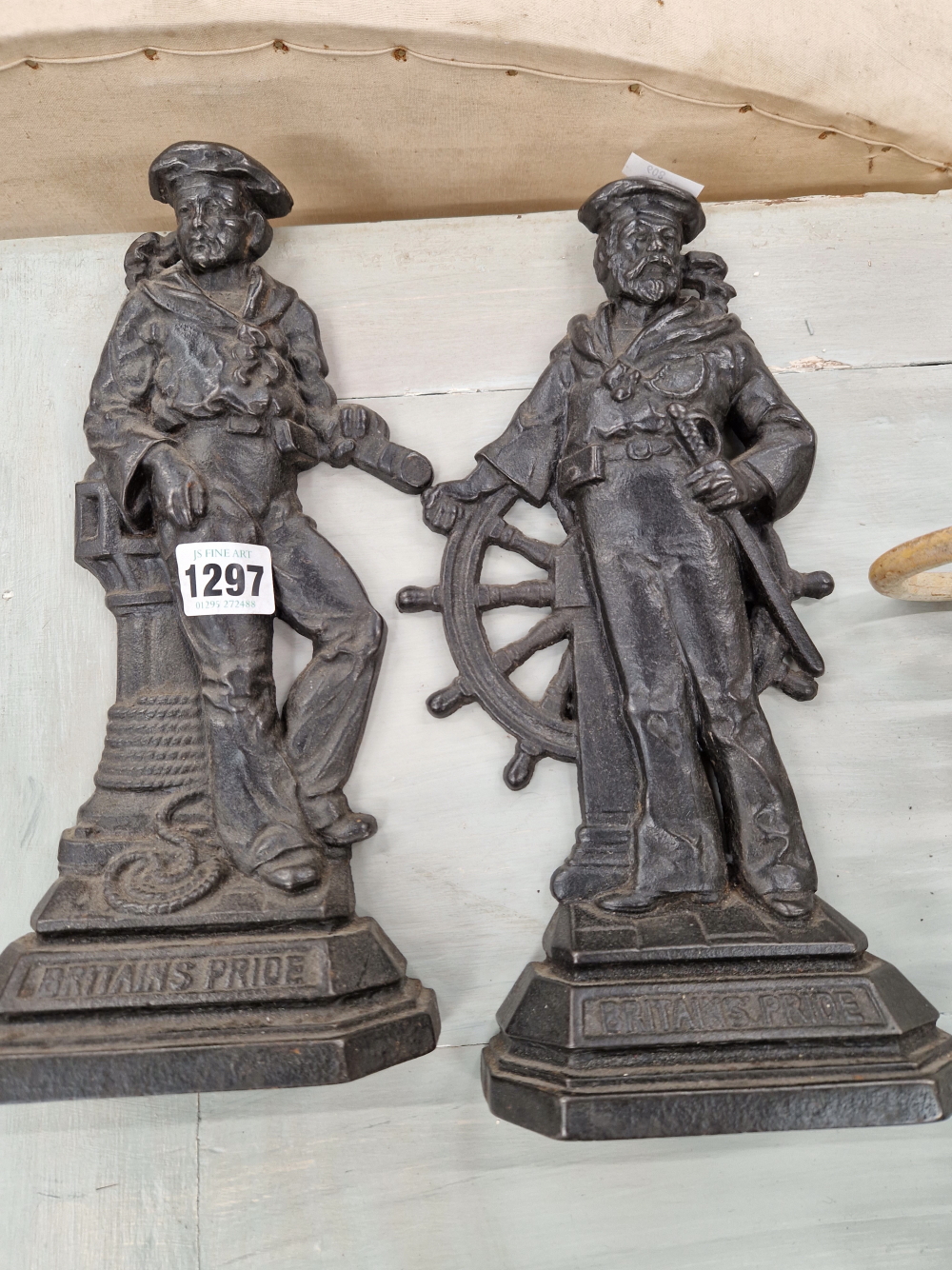A pair of cast iron Borghese urns, attributed to Handyside foundry
mid 19th century 79cm.; 31ins high The firm of Andrew Handyside were established at the Britannia Iron Works, Derby in 1851. At the Great Exhibition they exhibited Medici vases, bacchanalian vase and a bronzed vase decorated with busts of Peel, Nelson, Watt, Wellington, Stephenson, Scott, Shakespeare and Milton, and a fountain; at the time was described as being |from the magnitude of its operations is second to none in England| 1873 incorporated at a Limited Company. They produced two catalogues one possibly in 1850 and one in 1873. The Borghese urn is illustrated in their 1851 catalogue. This urn was recorded in the garden of Carlo Muti in 1594 by Flaminio Vacca who added that it had been discovered along with the Silenus and Infant Bacchus on Muti~s estate near present day Casino Massimo. In 1645 the urn had found its way into the Villa Borghese where it stayed until purchased by Napoleon in 1807. By 1811 it was on display in the Louvre where it remains today. Three copies of the urn, in a similar monumental scale were made for the Bassin de Latone, Versailles. Often paired with the Medici urn, they were popular garden ornaments throughout the 18th and 19th Centuries.
A pair of cast iron Borghese urns, attributed to Handyside foundry
mid 19th century 79cm.; 31ins high The firm of Andrew Handyside were established at the Britannia Iron Works, Derby in 1851. At the Great Exhibition they exhibited Medici vases, bacchanalian vase and a bronzed vase decorated with busts of Peel, Nelson, Watt, Wellington, Stephenson, Scott, Shakespeare and Milton, and a fountain; at the time was described as being |from the magnitude of its operations is second to none in England| 1873 incorporated at a Limited Company. They produced two catalogues one possibly in 1850 and one in 1873. The Borghese urn is illustrated in their 1851 catalogue. This urn was recorded in the garden of Carlo Muti in 1594 by Flaminio Vacca who added that it had been discovered along with the Silenus and Infant Bacchus on Muti~s estate near present day Casino Massimo. In 1645 the urn had found its way into the Villa Borghese where it stayed until purchased by Napoleon in 1807. By 1811 it was on display in the Louvre where it remains today. Three copies of the urn, in a similar monumental scale were made for the Bassin de Latone, Versailles. Often paired with the Medici urn, they were popular garden ornaments throughout the 18th and 19th Centuries.















Testen Sie LotSearch und seine Premium-Features 7 Tage - ohne Kosten!
Lassen Sie sich automatisch über neue Objekte in kommenden Auktionen benachrichtigen.
Suchauftrag anlegen